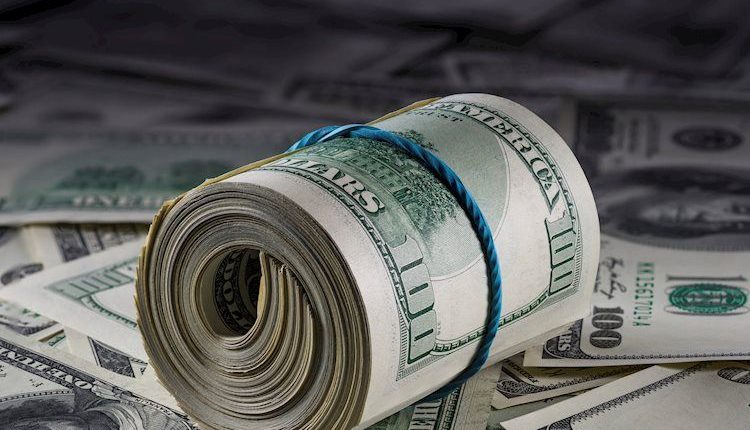- The US Dollar off the lows for this Friday with markets nervous on France’s budget talks possibly toppling the government.
- Monday’s opening might get choppy if French Prime Minister Michel Barnier is unable to secure a deal with the far-right National Rally party.
- The US Dollar Index is back above 106.00 and is looking for a daily and weekly close above the level to secure more upside into next week.
The US Dollar (USD) is recovering with the US trading session opening on Black Friday. The rally in the Euro which was weighing on the US Dollar and the US Dollar Index (DXY), is fading at the start of the US trading session.
France’s budget talks are not going well, with Prime Minister Michel Barnier having to consent to too many demands from the far-right National Rally from Marine Le Pen. The budget concerns are sending French yields higher, to levels matching weaker European peripheral countries such as Greece, fueling a stronger Euro over the US Dollar.
Meanwhile, US financial markets will close early on Friday after Thanksgiving Day. US equity futures are trading flat while the US bond market opens up under thin liquidity.
Daily digest market movers: Monday opening will be focused on France
- Far-right National Rally leader Marine Le Pen, who holds outsize leverage in France’s split parliament, gave Prime Minister Michel Barnier until Monday to kneel to her budget demands before she decides whether to topple the government, Bloomberg reports.
- Prime Minister Barnier already agreed to abandon plans to raise taxes on electricity on Thursday, Reuters reports.
- Equities are set to close off this Friday with some slim gains for both Europe and the US despite thin liquidity this Black Friday.
- The CME FedWatch Tool is pricing in another 25 basis points (bps) rate cut by the Fed at the December 18 meeting by 66.3%. A 33.7% chance is for rates to remain unchanged. The Fed Minutes have helped the rate cut odds for December to move higher.
- The US 10-year benchmark rate trades at 4.19%, falling to this week’s low at the start of this Friday after being closed on Thursday.
US Dollar Index Technical Analysis: French risk over the weekend
The US Dollar Index (DXY) faces some more selling pressure on Friday, with one of its main components, the Euro, weighing the Index down. With the uprising in French yields and spreads, the rate gap between the US and Europe gets narrower, with the Euro catching up with the US Dollar. Pivotal support levels need to be identified, with the “Trump trade” set to pick up soon again as President-elect Donald Trump takes office in January.
With this week’s decline in the DXY, former support levels have now turned into resistance. On the upside, 106.52 (April 16 high) is the first level to watch. Should the Dollar bulls reclaim that level, 107.00 (round level) and 107.35 (October 3, 2023, high) are back on target for a retest.
If the DXY correction continues, the pivotal level at 105.53 (April 11 high) comes into play on Friday as the last man standing before heading into the 104-region. Should the DXY fall all the way towards 104.00, the big figure and the 200-day Simple Moving Average at 104.03 should catch any falling knife formation.
US Dollar Index: Daily Chart
Fed FAQs
Monetary policy in the US is shaped by the Federal Reserve (Fed). The Fed has two mandates: to achieve price stability and foster full employment. Its primary tool to achieve these goals is by adjusting interest rates. When prices are rising too quickly and inflation is above the Fed’s 2% target, it raises interest rates, increasing borrowing costs throughout the economy. This results in a stronger US Dollar (USD) as it makes the US a more attractive place for international investors to park their money. When inflation falls below 2% or the Unemployment Rate is too high, the Fed may lower interest rates to encourage borrowing, which weighs on the Greenback.
The Federal Reserve (Fed) holds eight policy meetings a year, where the Federal Open Market Committee (FOMC) assesses economic conditions and makes monetary policy decisions. The FOMC is attended by twelve Fed officials – the seven members of the Board of Governors, the president of the Federal Reserve Bank of New York, and four of the remaining eleven regional Reserve Bank presidents, who serve one-year terms on a rotating basis.
In extreme situations, the Federal Reserve may resort to a policy named Quantitative Easing (QE). QE is the process by which the Fed substantially increases the flow of credit in a stuck financial system. It is a non-standard policy measure used during crises or when inflation is extremely low. It was the Fed’s weapon of choice during the Great Financial Crisis in 2008. It involves the Fed printing more Dollars and using them to buy high grade bonds from financial institutions. QE usually weakens the US Dollar.
Quantitative tightening (QT) is the reverse process of QE, whereby the Federal Reserve stops buying bonds from financial institutions and does not reinvest the principal from the bonds it holds maturing, to purchase new bonds. It is usually positive for the value of the US Dollar.
Read the full article here

